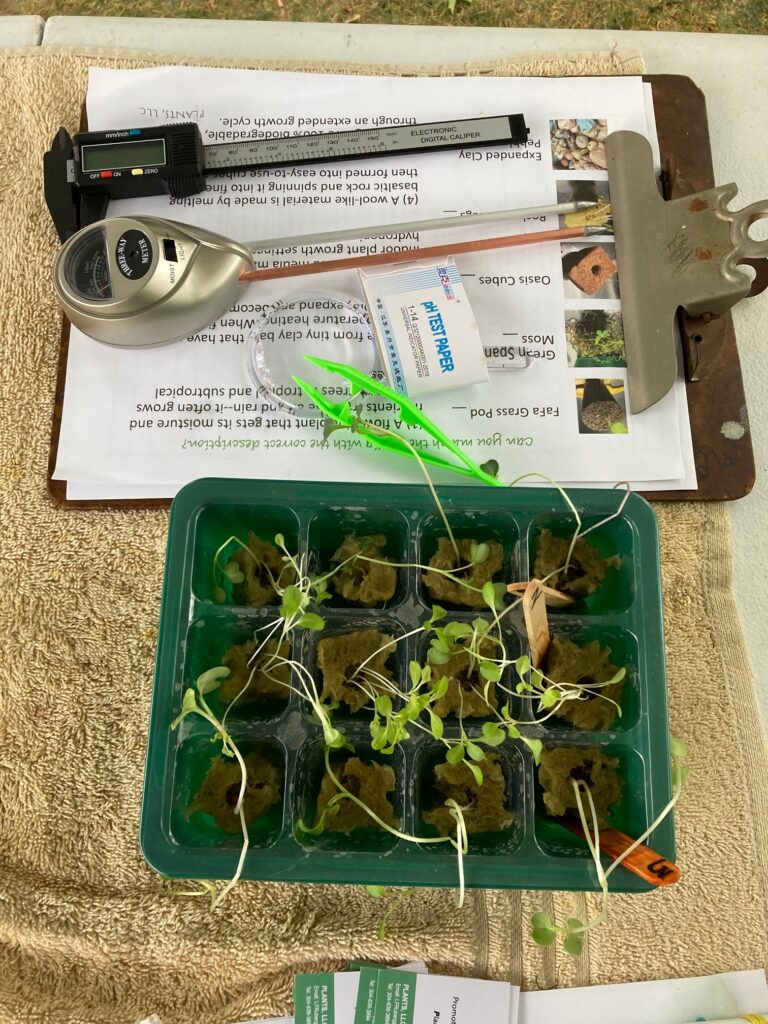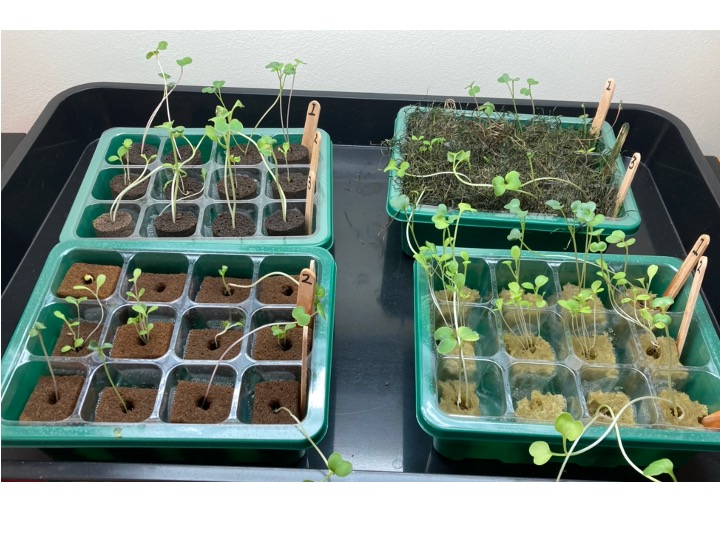
Why conduct a media comparison investigation?
Plants don’t need soil to grow. Plants can grow extremely well in hydroponic and other types of soilless systems. However, without soil as their foundation, plants need an alternative media that can provide support for the plant stem and roots. This investigation gives students an opportunity to assess and compare different media that are commonly used for soilless plant production.
What is involved in this media comparison investigation?
In this activity, students are asked to take on the role of an agricultural lab technician who is investigating different media used as substrate to grow hydroponic salad greens. In their role as Ag Lab Technicians, students will examine, test, observe, gather data, analyze results, and recommend which substrate material is best suited for growing hydroponic crops—especially salad greens. Ultimately, the students’ media recommendations will be used guide the design of the hydroponic system used to grow salad greens to supplement the fresh produce served in the school cafeteria.

Students will apply the scientific method as they work through this activity. They will formulate a hypothesis, test their hypothesis, record data and observations, create charts and tables to present their data and analysis and support their recommendations.
Students will use several different scientific measuring tools to collect data for their media comparison investigation. Depending on the age level of your students, these tools may include a digital caliper; 3-way moisture, light, pH meter; pH paper; magnifying glass (or digital microscope).
What will students learn by doing this investigation?
Students will record what they observe through first-hand, sensory observation of the different media. They will also collect quantitative data for their media comparison. The scientific instruments used will help students have numeric measurements as well as qualitative observations to assess the qualities of each media.

Collecting both qualitative observations as well as quantitative data for their media comparison will help students gain experience with incorporating both types of data in their analysis and to support their media comparison recommendations. In this way, the media comparison investigation helps students achieve an important Next Generation Science Standards and West Virginia Science Standard: “Make observations and measurements to identify materials based on their properties.”
What grade level is the media comparison investigation best suited for?
Depending on what is asked of the students in terms of how to represent their data, analysis, and recommendations, this activity can be adapted for fifth through middle school grade levels.
How can teachers access this activity to use with their students?
Teachers interested in using this activity can email plantlessons @ gmail.com to receive a free copy of this activity.
